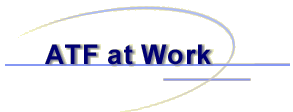


As suggested by its name, and unlike the Internal Revenue Service and the Drug Enforcement Agency, the Bureau of Alcohol, Tobacco, Firearms and Explosives (ATF) has over the years been assigned a variety of responsibilities that were not always obviously connected.
To a considerable extent, however, this historic problem may have eased on January 24, 2003 when most of the ATF was moved from the Treasury Department to the Justice Department. While under the Treasury umbrella, ATF had always served as a tax collection agency. While the relative importance of this role -- going after alcohol and tobacco excise taxes -- declined with America's adoption of the income tax -- the ATF was for many decades a primary source of federal revenue.
In recent years, even the law enforcement part of the this comparatively small agency had attempted to cover a great deal of ground. Specialized ATF programs were established to provide expert assistance in the wake of serious bombing incidents. Other projects were created to remove "the most dangerous armed career criminals and drug traffickers" from American communities, to identify and prosecute individuals around the country illegally supplying firearms to violent criminals, to provide special training to fourth and seventh graders designed to decrease gangs and to manage the ATF's firearms licensing programs.
Looking at the agency's enforcement activities, the data suggest the ATF is becoming more focused. From FY 1997 to FY 2002 prosecutions under various weapons charged increased 282%. During the same period, however, ATF prosecutions for other kinds of crimes including the illegal use of explosives and drugs went down 7%.
Enforcement information for FY 2002 alone highlights this development. In that year, there were 7,643 prosecutions that the Justice Department credited to the ATF. For 5,390 of them, the lead charge was one of several sections of a broad weapons law -- 18 USC 922. But the data further showed that for 4,110 prosecutions under the broad weapons law, one particular section used for prosecuting felons found to be carrying a weapon was the lead charge. By way of comparison, in that year there were only 885 ATF prosecutions where the lead charge involved drugs.
| ATF at Work | TRAC-ATF |
